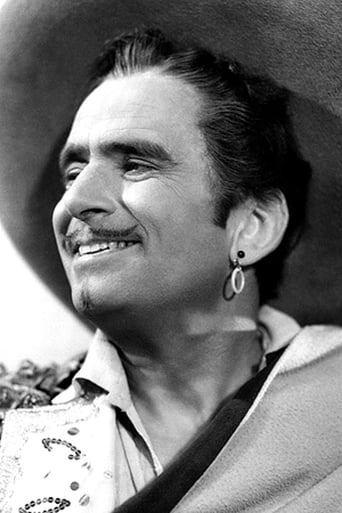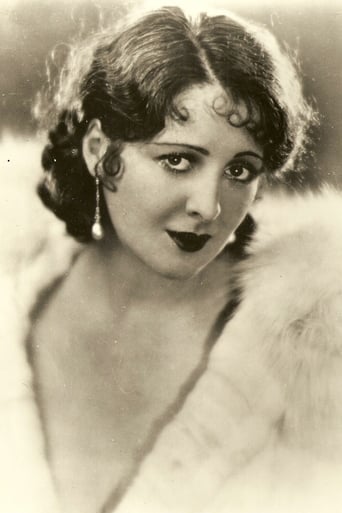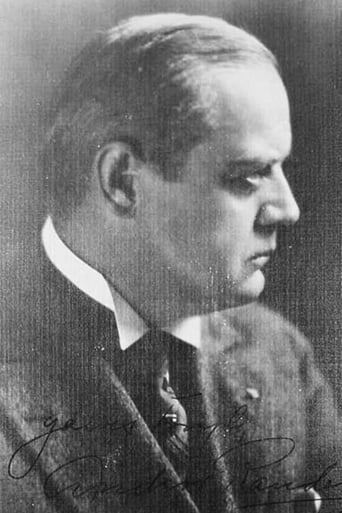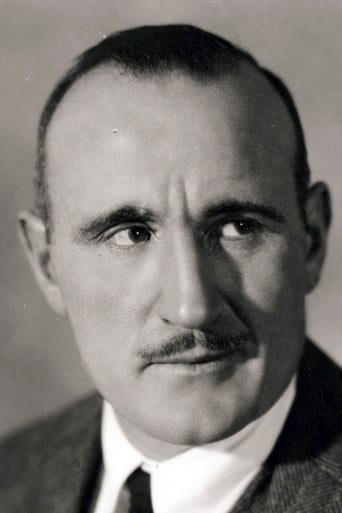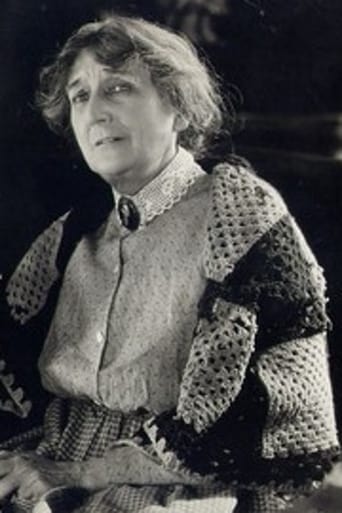Exoticalot
People are voting emotionally.
Libramedi
Intense, gripping, stylish and poignant
Tedfoldol
everything you have heard about this movie is true.
Lidia Draper
Great example of an old-fashioned, pure-at-heart escapist event movie that doesn't pretend to be anything that it's not and has boat loads of fun being its own ludicrous self.
ma-cortes
Fun silent pirate movie , plenty of action , thrills , exciting sword-play , luxurious costumes , athletic feats , fabulous scenarios ; all meld together under Albert Parker's right direction . This exciting swashbuckling deals with the love story of a bold Buccaneer (Douglas Fairbanks) and a gorgeous princess (Billie Dove) and a subsequent vengeance . As a shipwrecked mariner vows vendetta on the pirates who destroyed his father's ship .As he writes on his father's tomb : ¨My father I solemnly vow¨. Seeking revenge, the athletic young man joins the pirate band led by a nasty captain (Randolf) responsible for his father's death . As Fairbanks uses all kind of shrewdness in order to penetrate a well-defended ship and take the command . Amusing pirate movie , plenty of emotion , astounding adventures , realistic miniature work , evocative cinematography in black and white and luxurious costumes ; this is the quintaessential pirate movie . This classic story of romantic adventure come to life enriched by fabulous scenarios and adapted rightly to the screen . Overwhelming battle ships , sword-play and full of villainy , romance , swashbuckler and heroism . The picture is fast-moving , exciting and thrilling right up to the climatic confrontation between Douglas Fairbanks and his villain enemies . Big budgeted film by United Artists Pictures , using appropriate ship shots and miniature sets when possible . ¨Black pirate¨ results to be Douglas Fairbanks's swashbuckling best and has achieved a classic status . Charming Douglas Fairbanks steals the show when he bounds and leaps , flies and run ; in addition he is the screenwriter of this rollicking adventure . Fairbanks executes athletic feats , moving sword-play and spectacular acrobatics similarly he demonstrated in other classics such as The Mark of Zorro (1920), Robin Hood (1922), Three musketeers , Don Q Son of Zorro , The gaucho , The iron mask , The Taming of the Shrew , Don Juan , Mr Robinson , among others . Douglas performed most of the stunts in his films himself. He was an excellent athlete and used his physical abilities to his best advantage. Douglas was king of Hollywood by that time and he formed his own production company ; during a Liberty Bond tour with Charles Chaplin he fell in love with Mary Pickford with whom he, Chaplin and Griffith had formed United Artists in 1919. In fact, there is a cameo appearance by Mary Pickford as Princess Isobel in Final Embrace . Furthermore , there appears Nino Cochise, grandson of the famous Apache chief Cochise as an extra in this movie , it was his second extra job in Hollywood, his first one being in Douglas Fairbanks' Robin Hood . The crew of Douglas Fairbanks' longboat in the climactic chase and battle were members of the crew of the USS Arizona .Bright black and white cinematography , though also available in color .This silent version was accompanied with an appropriate piano musical score . The motion picture was professionally realized by Albert Parker who directed some vehicles for Douglas Fairbanks . However , Donald Crisp -who plays a secondary role- was the original director, but after a few days of filming had a falling-out with star Douglas Fairbanks and was replaced by Parker.
bkoganbing
One of Douglas Fairbanks best known roles is The Black Pirate in which he's not so blackhearted after all, but instead the son of a duke who was treacherously killed by the pirates Fairbanks joins and upon whom he plans to wreak vengeance.Along the way Doug meets and falls for a genuine princess as well in the person of Billie Dove. She too has fallen into their hands, but a quick thinking Doug persuades his new companions that they could do far better holding her for a nice ransom.The Black Pirate is primarily known for the spectacular stunts that Doug was still doing as his fans expected him. He was 43 when he made The Black Pirate, but was a man who kept himself in remarkably good shape even at that age. After the coming of sound, middle age would descend on Fairbanks rapidly. The most famous stunt of all was repeated several times in the film with Fairbanks descending down a length of sail by sticking his cutlass in it and going down like an elevator. Errol Flynn tried the same thing in Against All Flags and broke an ankle in the process.Fans might recognize Donald Crisp who was also directing the film originally as one of the pirates. The screenplay was written by Fairbanks himself under a pseudonym. Some artistic differences got Crisp replaced, but still in the film as an actor.The film holds up remarkably well as do all of Douglas Fairbanks silent films, the action is infectious and engrossing as is the larger than life personality of Douglas Fairbanks.
GJValent
I saw The Black Pirate during the first season(?) of Silents Please, before the Ernie Kovacs hosted episodes. Of course, it was a truncated 20 or so black and white minutes of a 90 minute color film. Still, the two scenes that stuck in my mind were the 'sword ride down the sail', and the underwater swimming sequence. I saw this episode once, and at 9 or 10 years old, didn't pay much attention to the actors. Once after that, I asked my father if that was the, 'pirate from the silent movie', while we were watching something with Gilbert Roland. My father had no idea what I was talking about. Now, sometime in the 1990s, I caught a cable documentary about silent films, (there are ****loads of docs about them), and one featured a short color sequence of The Black Pirate. OMG, I saw that 40 years ago ! Now I knew the flick, the star, the format. A quick Google and I ordered a Kino video, (pre DVD), of The Black Pirate. Everything I remembered was there, and, a LOT more. Like 70 minutes more, and, in COLOR. I don't know how big a hit this was, but, it should have been the Titanic of its day. A fast moving story, lots of action, sex(sort of), violence, revenge, and COLOR ! Also, you only had to sit still for 90 minutes instead of 4 hours. Anyway, Doug shows again why he was the King of Hollywood. Great stunts, good looking, able to do ANYTHING. BTW, the additional features on the video/DVD show you how he was able to do anything. If you haven't seen it, this 'footnote' to the history of 'silent, color film', is a must see/have.
Cyke
015: The Black Pirate (1926) - released 3/8/1926, viewed 8/10/05 Scotch Tape is invented. Gosden and Correll begin broadcasting their radio show Sam 'n' Henry, a precursor to Amos 'n' Andy. John Logie Baird demonstrates a mechanical television system. The Shakespeare Memorial Theatre in Stratford-upon-Avon burns down.BIRTHS: Margaret Thatcher, Angela Lansbury, Johnny Carson, Jonathan Winters, Robert Kennedy, Sammy Davis Jr., Dick Van Dyke, George Martin, Patricia Neal, Haskell Wexler, Leslie Neilsen, John Schlesinger, Alan Greenspan.KEVIN: It was interesting to see the early two-strip Technicolor process used in this film. There are so very few silent color films. One of the effects of the color is it makes the occasional violence a little more chilling, as the blood is actually red. The best part is definitely when he takes the ship single-handed. We listened to a bit of Rudy Behlmer's commentary, where he mentioned how Fairbanks worked really hard to stay in shape all the time, unlike Errol Flynn, who endeavored to have alcohol in his body at all times. Watching this film, I feel like we should have watched Fairbanks' earlier stuff, like Mark of Zorro, and we'll probably go back and watch that stuff later on. This movie was plenty exciting, with all the crazy swordfight action. I thought it was kind of weird when he swims ashore and comes back with a whole boatload of longboat rowing soldiers out of nowhere. I could buy the conjured army in Thief of Bagdad because it was a fantasy, but here it's a little more difficult. I couldn't stop thinking, "Where'd he dig up all these guys?" DOUG: Buster Keaton and Charlie Chaplin may have ruled the world of silent comedies, but Douglas Fairbanks Sr. was the king of the silent action/adventure movie. This film is notable for using an early two-strip version of Technicolor (which we just saw in Phantom). It is an excellent example of a Douglas Fairbanks movie, showing off his usual bravado. It seems like every Fairbanks movie ends with our hero summoning an army out of nowhere just when he needs it. I mean, where did that longboat come from? And he also makes fighting off a horde of swordsmen look easy. We listened to a bit of Rudy Behlmer's commentary, which mentions that Fairbanks always went to great lengths to stay physically fit (unlike, say, Errol Flynn, who would smuggle alcohol onto the set in hidden flasks and injected oranges), and did many of his own daring stunts. Behlmer also mentions that Fairbanks' wife Mary Pickford was filming her movie, Sparrows, at the same time, on the very same lot. Hey, we're watching that next! Last film viewed: Phantom of the Opera (1925). Last film chronologically: Battleship Potemkin (1925). Next film viewed: Sparrows (1926). Next film chronologically: For Heaven's Sake (1926).The Movie Odyssey is an exhaustive, chronological project where we watch as many milestone films as possible, starting with D.W. Griffith's Intolerance in 1916 and working our way through, year by year, one film at a time. We also write a short review for each film before we watch the next, never reading the other's review before we finish our own. In this project, we hope to gain a deeper understanding of the time period, the films of the era, and each film in context, while at the same time just watching a lot of great movies, most of which we never would have watched otherwise.

